Astronomical events September 2023
This month will mark the entrance of the third season of the year, autumn. As a preamble to the annular eclipse on October 14, we will tell you about the first described solar eruption. We will also tell you that, between August 28 and September 21, we will have the last meteor showers of the summer. The Moon usually passes very close or hides some celestial objects; now we will enjoy the approach of the Moon to the Pleiades cluster. Likewise, we will have a double challenge to find two very interesting galaxies: NGC 55 and NGC 300. We will close with the conjunction of the Moon and Saturn. Of course, we cannot forget the anniversaries of the lunar phases.
Goodbye to the sweltering summer
This year, summer has actually been stifling, fortunately the autumn equinox has arrived. For the northern hemisphere, autumn begins on September 23 at 06:50 Universal Time, that is, on September 23 at 00:50 central Mexico time. Meanwhile, for the southern hemisphere, spring will begin. We know that at the equinox (from Latin aequinoctium - aequus nocte) the duration of day and night are equal, they last 12 hours.
Heading to the first eclipse of the Sun
On October 14, 2023, the inhabitants of some areas of the Yucatan Peninsula will witness a great event, an annular eclipse of the Sun, while in the rest of the country, a partial eclipse will be seen. So, to get into the matter, today we will tell you that in 1859 the astronomer Richard C. Carrington saw fit to make the first observation of a solar flare, a precursor effect of the coronal mass ejection, when he was observing our star he noticed two “patches of very intense brightness that, in just 5 minutes, had crossed a space of 56,000 kilometers.” He published this information in the journal of the Royal Astronomical Society in 1860, in an article titled “Description of a Singular Appearance seen in the Sun.” Carrington also contributed to studies that led to the definition of differential rotation in the Sun and the solar winds. It is worth remembering that the Sun has an activity period of 11 years, in which a large number of sun spots and protuberances can be observed and, precisely, between 2023 and 2024 we will reach a maximum of activity, interesting, right?
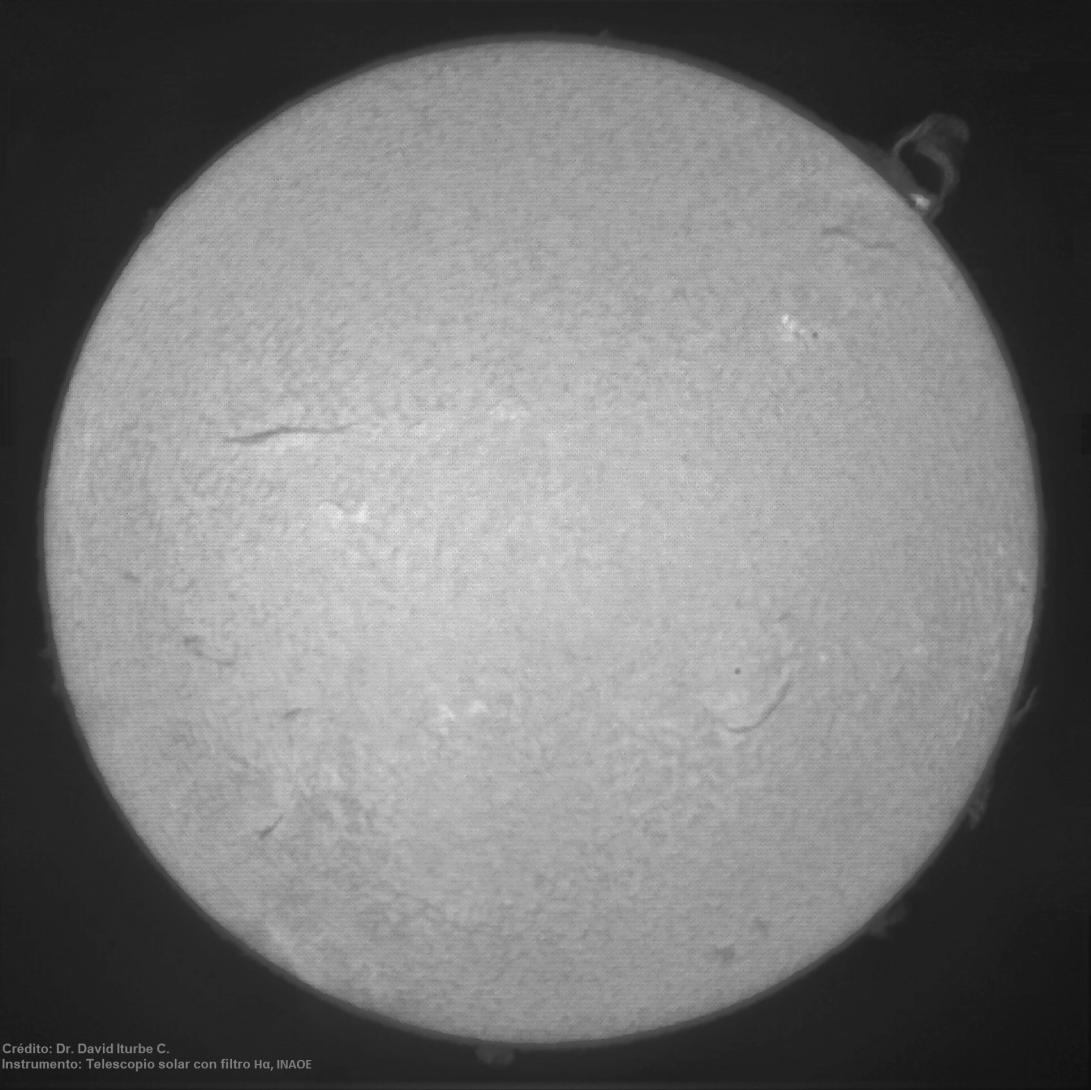
Last summer rains
If you look very patiently towards the night sky, between August 28 and September 21, it is almost certain that you will be able to come across a “shooting star”, since between these dates we will have the last meteor showers of the summer.
From August 28 to September 5, the ? Aurígida meteor shower will be present, caused by comet C / 1911 N1 (Kiess), with its maximum on September 1. The maximum observable rate will be 6 meteors per hour. The best time for observation will be at dawn on September 1, in the direction of the Auriga constellation.
From September 5 to September 21, the ? Perseid meteor shower will appear, with its maximum on September 9. The maximum observable rate will be 5 meteors per hour. It is still unknown what object causes it. The best time will be at sunset on September 9, in the direction of the constellation of Perseus.
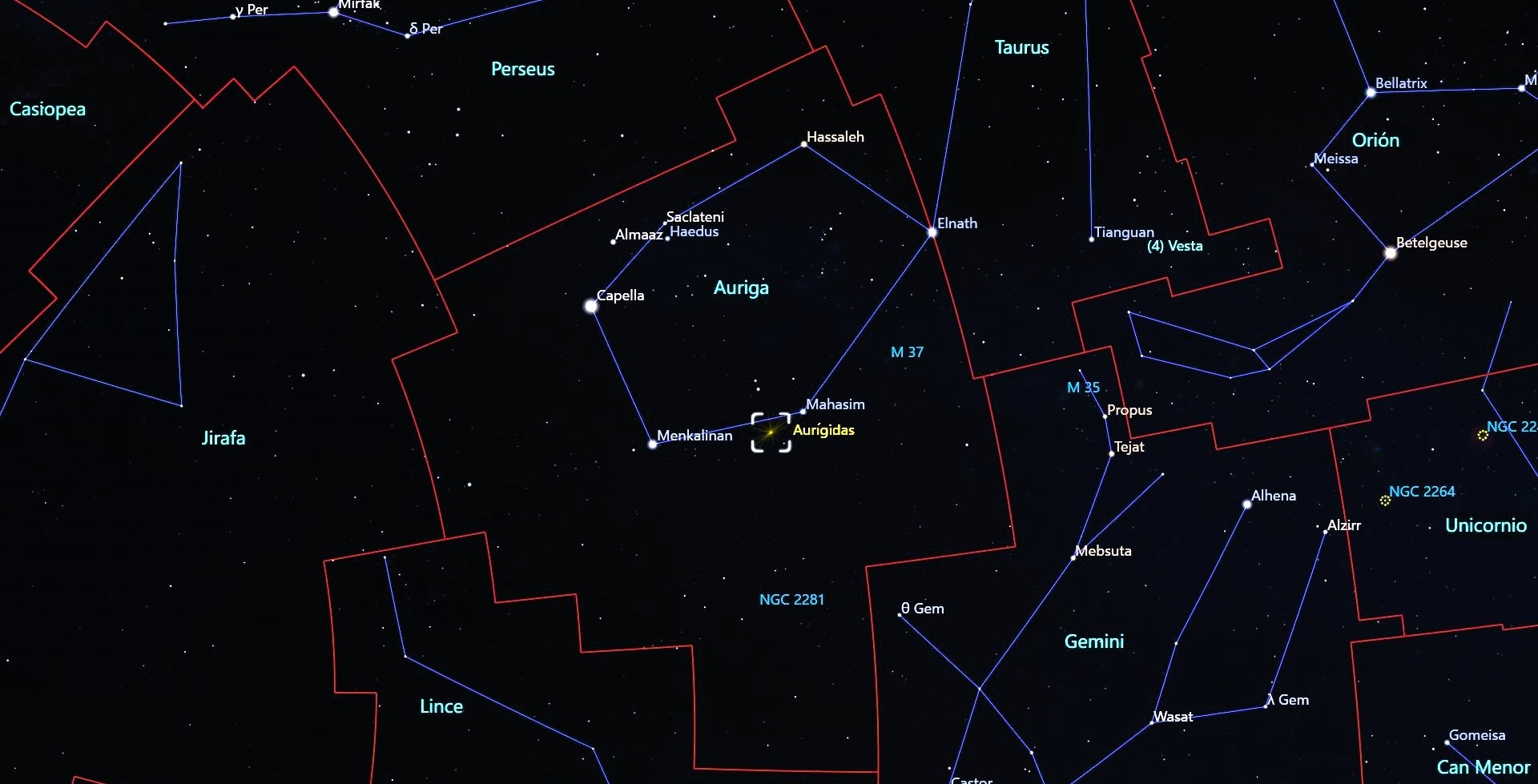
Morning postcard
At the beginning of the month, we will have a close approach between the Moon and the open cluster M45, also known as the Pleiades, the seven sisters or the seven goats (Alcyone, Electra, Atlas, Pleione, Maia, Taygeta and Merope) daughters of Atlas, the Greek mythological titan that sustains the world. We currently know that this cluster contains several hundred stars. The Moon will be passing just 1° 06' from M 45, in the direction of the constellation of Taurus. To complete the postcard, we will have the planets Uranus and Jupiter very close. The best time to observe the approach will be in the early morning of the 5th.
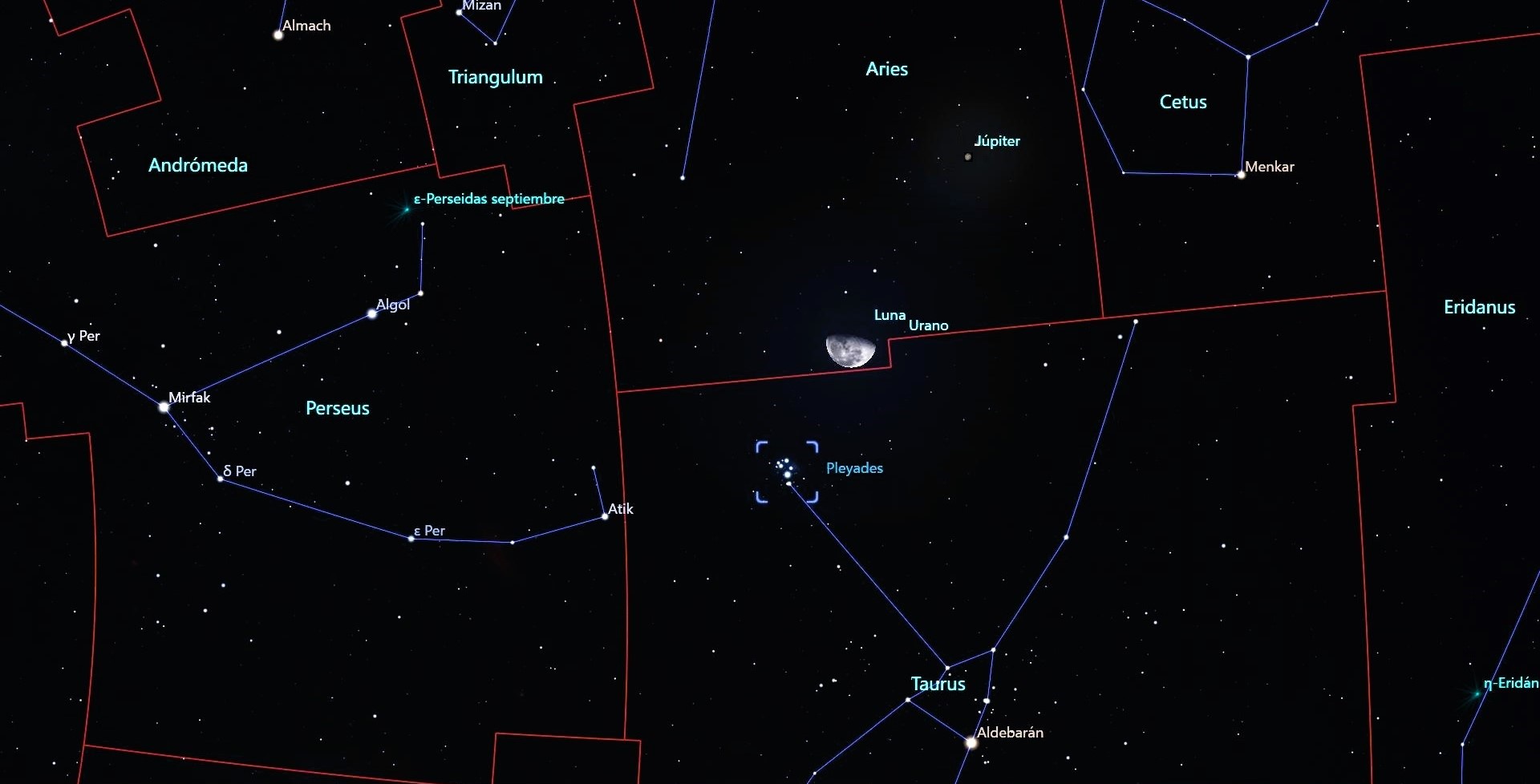
A very Magellanic galaxy and its neighbor
Some observations suggest that the galaxy NGC 55 is very similar to our satellite galaxy, The Large Magellanic Cloud (GNM), with a big difference being the distance. NGC 55 is located more than 6 million light years away, in the direction of the Sculptor constellation, while the GNM is only 180 thousand light years away from us, and belongs to the Local Group of Galaxies. NGC 55 exhibits features of starbursts and clusters of young, blue stars, as well as some recent supernova events. The morphology of NGC 55 indicates a structure with a flattened and narrow profile, with an approximate diameter of 50 thousand light years.
In the same region, in the Sculptor constellation, the galaxy NGC 300 or Molinillo Austral is located, a spiral galaxy located about 7 million light years, with an average diameter of 35 thousand light years. NGC 300 gives us a colorful postcard with little evolved blue stars, making a wonderful contrast with the yellowish stars, already highly evolved.
Both NGC 55 and NGC 300 were first seen by astronomer James Dunlop in 1826 and belong to the Sculptor's Local Group of Galaxies, both will be well located for observation towards the southeastern part of the celestial sphere.
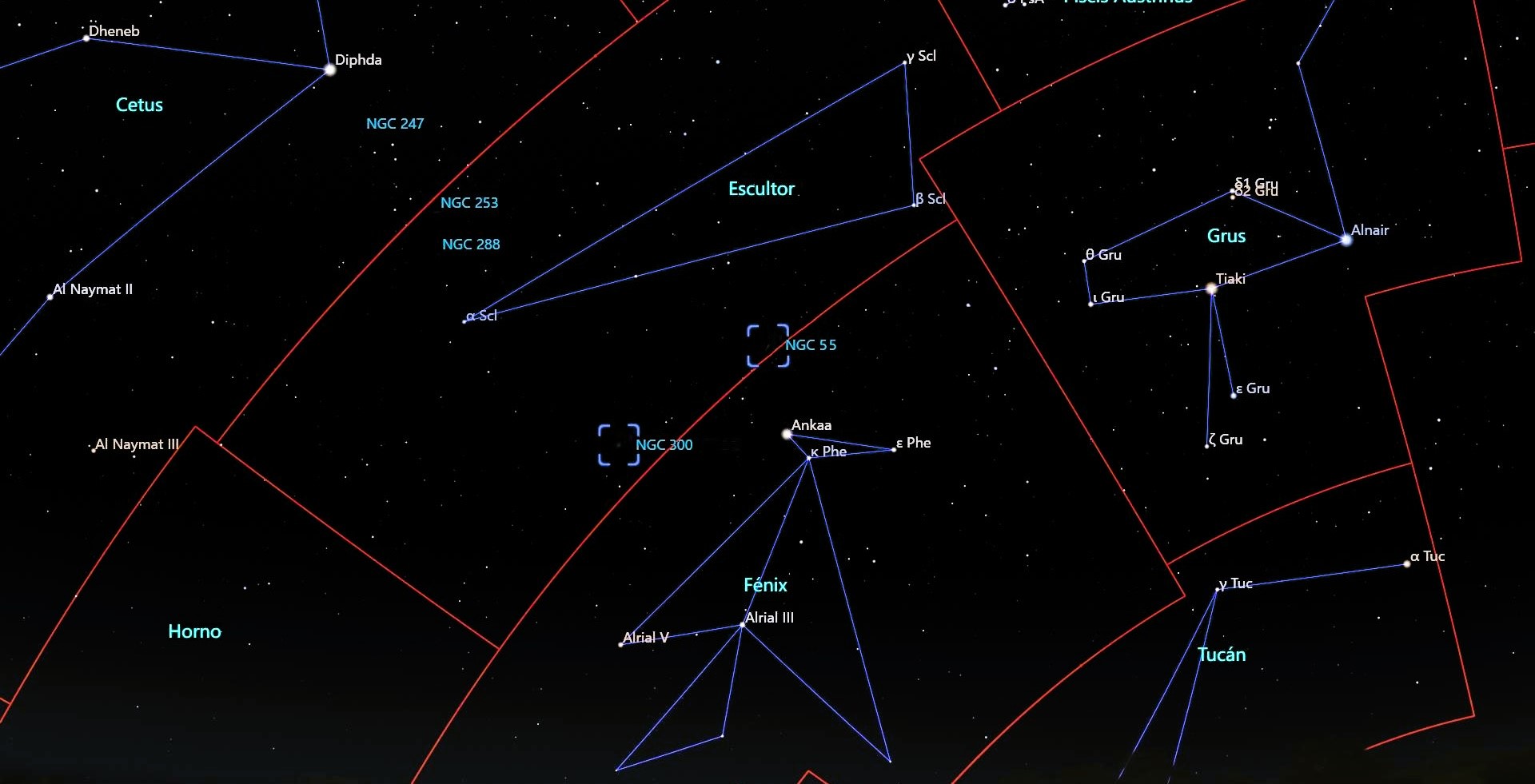
One more meeting
As is well known, the conjunction between planets, the Moon and the Sun is an event that occurs periodically, given that these celestial objects are located on the ecliptic (the ecliptic is, simply, a curvilinear line that describes the movement of the Sun throughout an entire year, it is rather the strip where the Sun, the Moon and the Planets move, seen from Earth). In particular, we will have the conjunction of the Moon and Saturn, both will share their Right Ascension coordinate, in such a way that the Moon will pass 2° 38' south of Saturn, in the direction of the constellation of Aquarius, on September 26, at 7:29 p.m., central Mexico time.
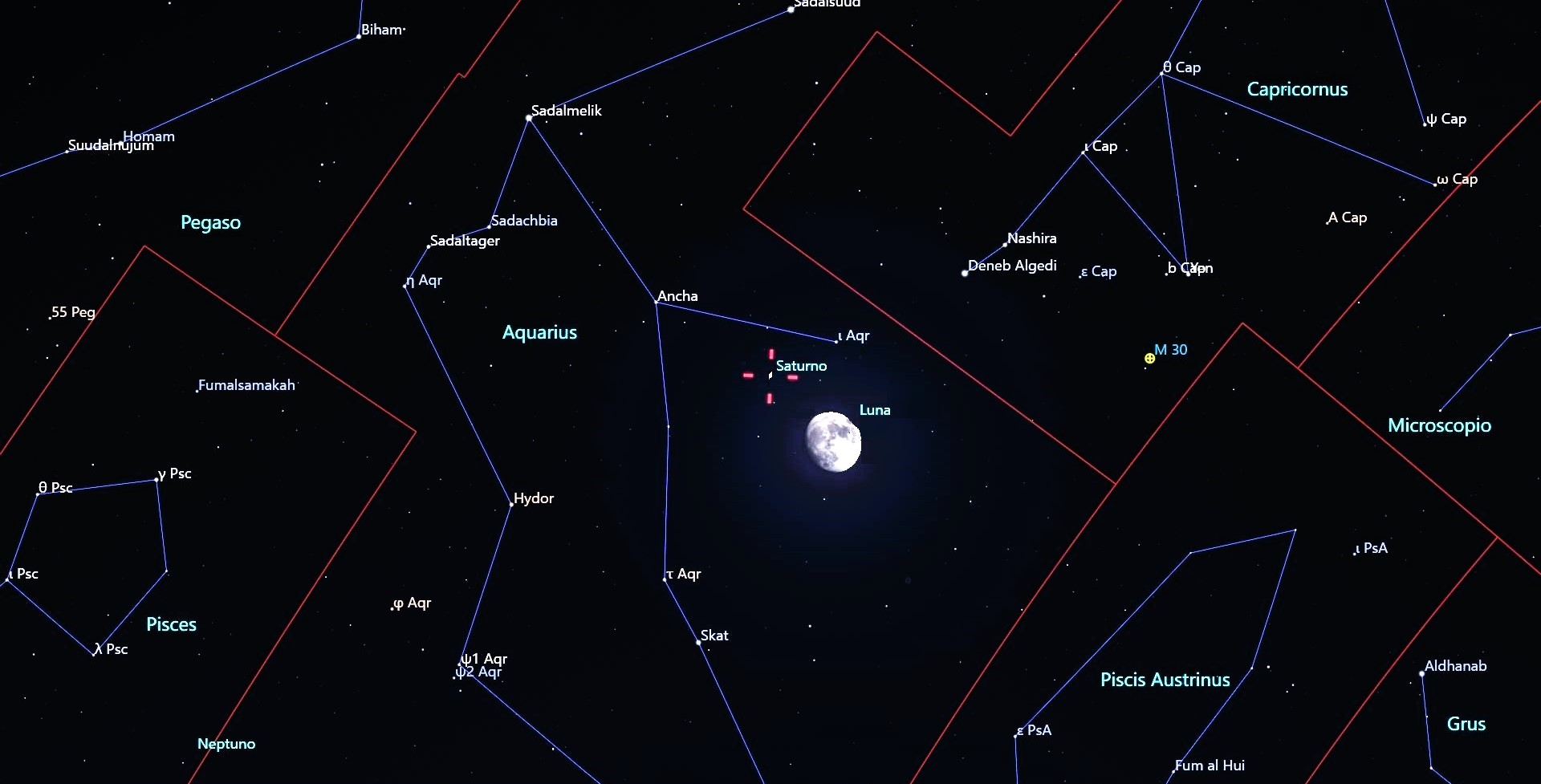
Phases of the Moon (Central Mexico time).
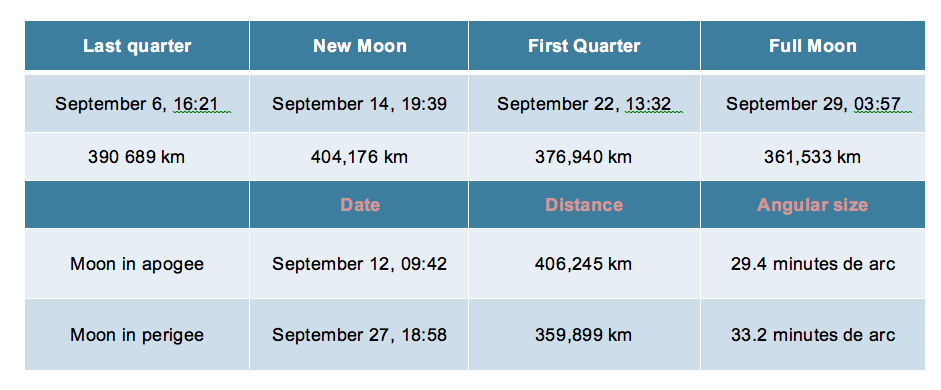
Watch the video of the month: https://youtu.be/Xkj7Ko6a9zE
Contacts:
Dr. Agustín Márquez Limón (amarquez@inaoep.mx), Coordinación de Astrofísica-INAOE
M. C. Tania Martínez (astronomiaplanetariokayok@gmail.com), Red de Planetarios del Estado de Quintana Roo
Dr. Raúl Mújica García, (rmujica@inaoep.mx), Coordinación de Astrofísica-INAOE y Noche de las Estrellas
Luis Enrique Erro # 1, Tonantzintla, Puebla, México, Código Postal 72840, Tel: (222) 266.31.00, difusion@inaoep.mx
This work is licensed under a Creative Commons Attribution-NonCommercial-NoDerivs 2.5 Mexico License.


